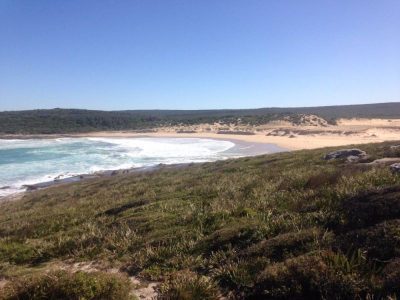COASTAL CULTURAL MODELS – MORAL ORDER PERSPECTIVE

Awe inspiring natural beauty
Of the seven models or perspectives discussed by Thompson (2007) and Stocker and Kennedy (2009) in the journal Coastal Management, in some ways I find this the quite problematic as a basis for coastal management.
Thompson uses words like awe, humility, wonder and proper order to which one might add spiritual reverence. He writes about the way certain people might conceptualise coastal landscapes/seascapes as worthy of preservation because God withheld his delegation to Man to “improve” parts of the earth thereby “creating a moral imperative to preserve those places” (p. 229). In this context, he takes us back to the writing of Locke, and refers to the advocacy of Muir and Thoreau who argued that awe inspiring places deserve protection and there is a role for governments to ensure that this is the case. The sense of awe has an aesthetic component that depends on the presence of expansive, lightly or non-populated views. Thompson makes it clear that the moral order perspective does not rely on an appeal to the work of a supreme being, but he does understand how many people are strongly affected, both positively and negatively (e.g. feelings of terror), by wide open vistas along cliffs, beaches, dunes and at sea.
Stocker and Kennedy comment on the sense of awe that many experience when they see the sea, “and this sense is perhaps spiritual in its origin” (p.392). They cite the works of Romantic poets such as Lord Byron and the writings of Australians including Stow and Winton. In particular, they find the work of Stow quite relevant as in his novel To the Islands where the coast and islands offers one of the characters “ psychic integration, reconciliation, spiritual redemption and physical respite” (p.393). They note that the sublime can be influential and reinforce other perspectives such as ecological and landscape, and those places where the interests of Aboriginal and Torres Strait Islanders have continued spiritual connections and responsibilities to “sea country” (p.398).
The moral order perspective can be quite personal. I have been to a number of places where feelings of awe and wonder have captured my senses. Standing on the edge of high cliffs and looking at the sea rolling towards me never ceases to stir me; going deep into the towering fiords of Labrador where there were no human settlements; diving on the edge of coral reefs; and wandering amongst mobile sand dunes with no vision of the sea, are just some of the amazing experiences that make me feel so humble about the forces and products of nature. It is not necessary to have limited human impact; I can look out from my house upon Sydney Harbour and see it in its various moods and feel inspired by its physical form and waters.
Moral order issues arise when natural scenery is going to be interrupted by some dramatic human structures. Thompson speaks of the impact of offshore wind farms in Nantucket Sound citing a comment from one opposed “ you wouldn’t put a wind farm in the Grand Canyon; why would you put it on the Cape”. Objections on local aesthetic grounds are quite common. Governments have been cognisant of such views and in 1997 the NSW Coastal Policy included as one of its objectives “areas of high aesthetic qualities to be protected”. That policy also noted within its vision statement the need to provide for the spiritual well-being of the community.
Dedication of national parks occurred has not only for ecological values, but also to address aesthetic (and mental health?) aspirations of the community with the protection of awe inspiring views.
There is a clear intersection with other perspectives. However, conflict can arise when so-called moral order interests are being vigorously pushed by elements in the community as we witnessed in NSW with the opposition to offshore sand mining in the early 90s. There were passionate calls to stop the mining from even being assessed on ecological and aesthetic grounds—Sydney sea views should not be abused by the sight of dredge ships and plumes from disturbing the sea bed. We can expect more such conflict if and when pressure to change our natural landscapes increases. Fortunately there are still vast areas of the Australian coastline that is relatively untouched and future planning must recognise the importance of moral order values.
Words by Prof Bruce Thom. Please respect Bruce Thom’s thoughts and reference where appropriately: (c) ACS, 2016, posted 17th October 2016, for correspondence about this blog post please email admin@australiancoastalsociety.org


 COASTAL CULTURAL MODELS – ECOLOGICAL PERSPECTIVE
COASTAL CULTURAL MODELS – ECOLOGICAL PERSPECTIVE